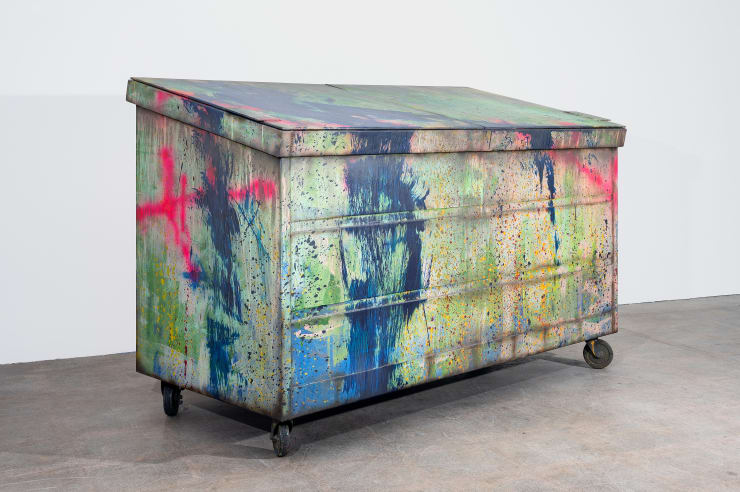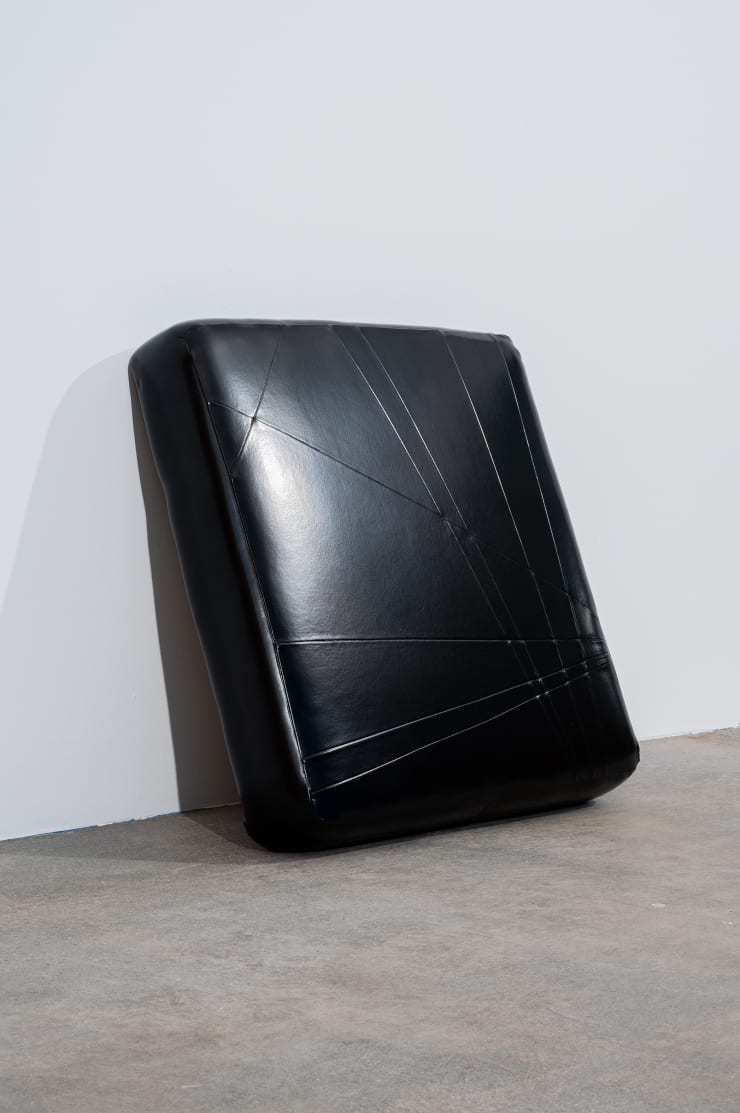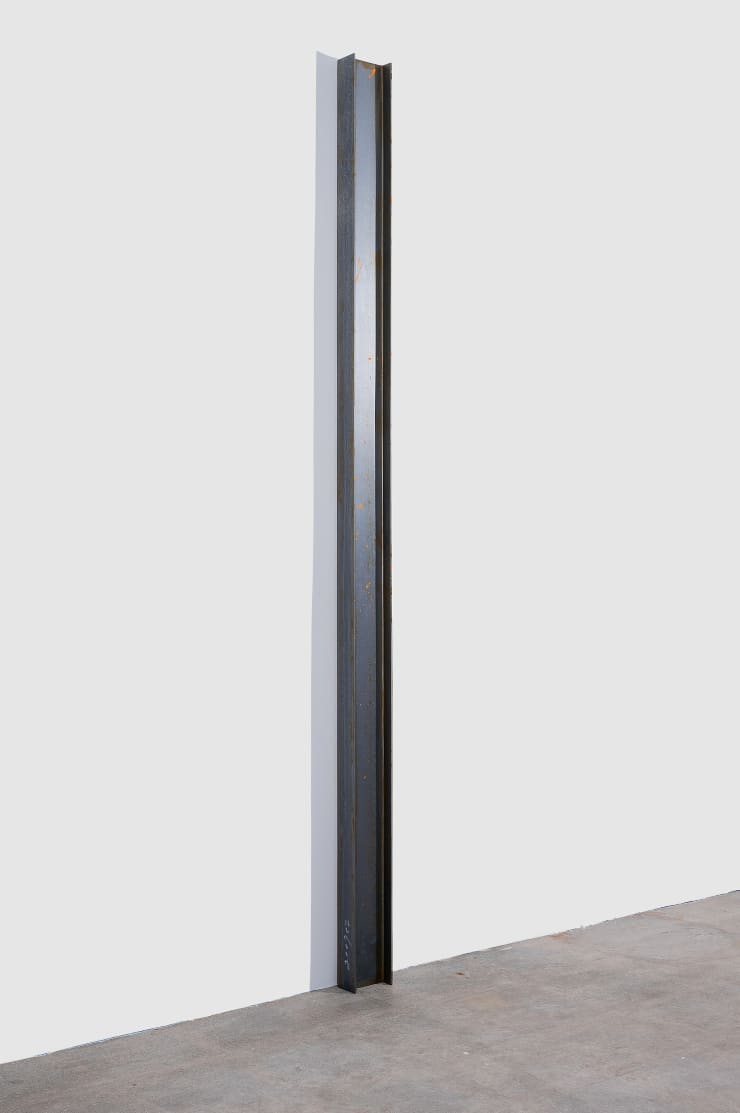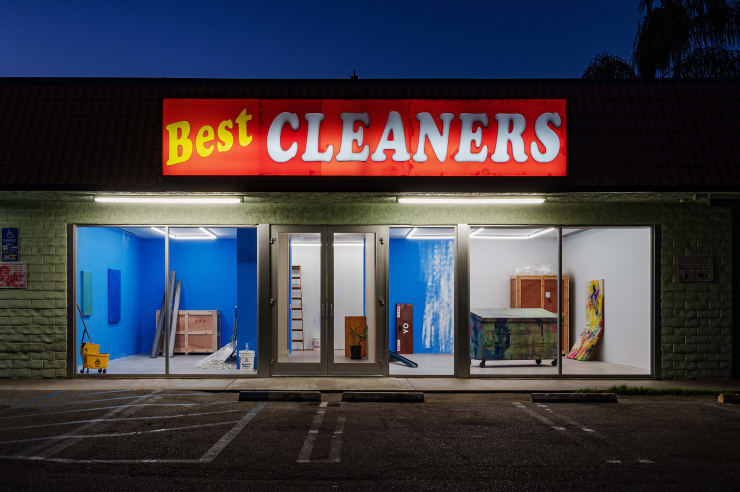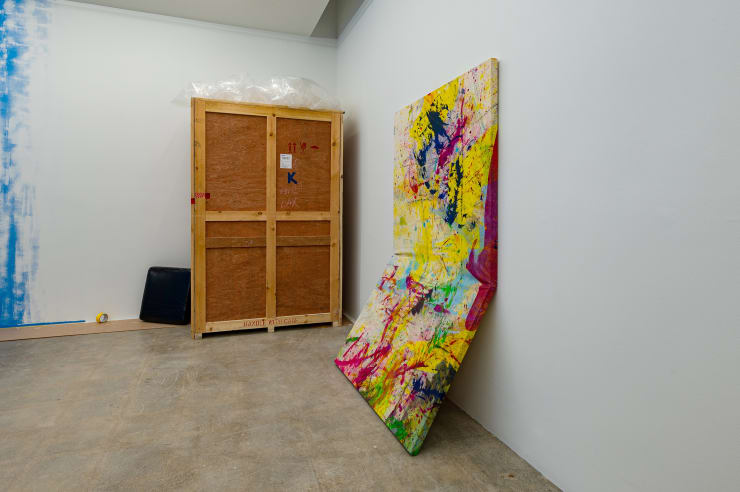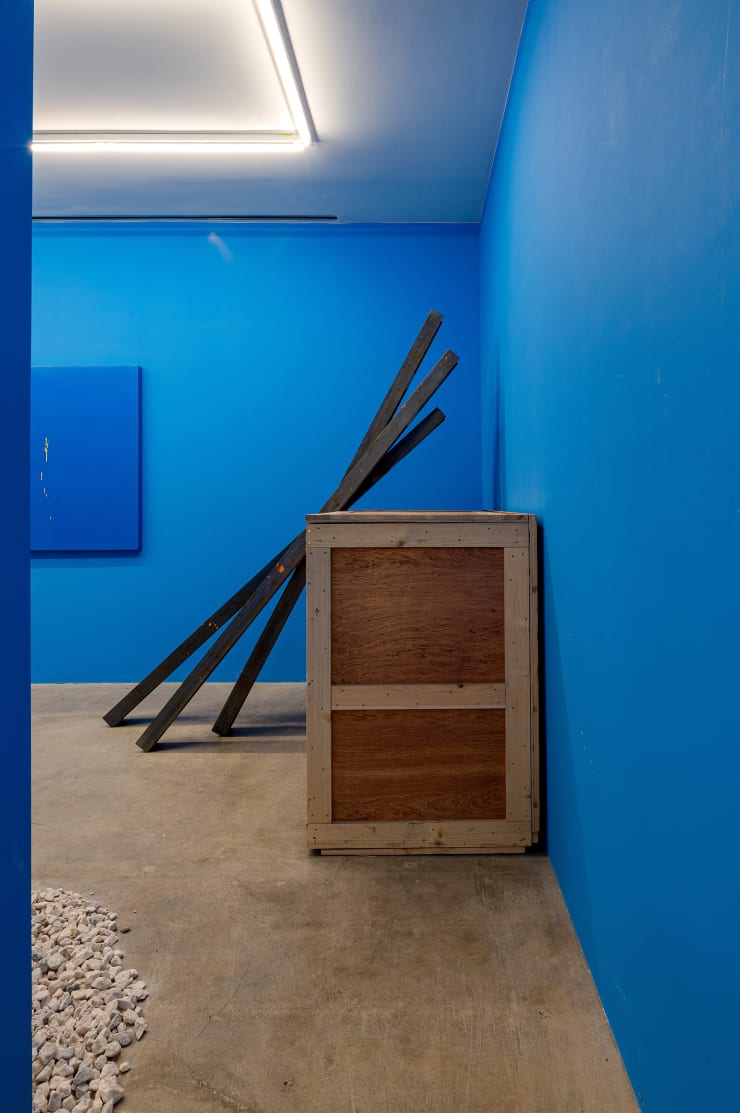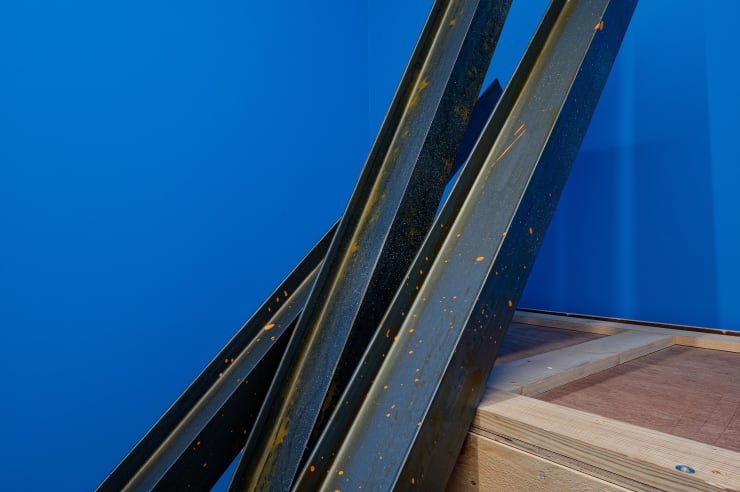Kaz Oshiro : 96375
Press:
Los Angeles Times, September 16, 2020
ArtnowLA, September 11, 2020
What's on Los Angeles, August 27, 2020
KCRW, August 25, 2020
Tique, August 22, 2020
Contemporary Art Dialy, July 26th, 2020
Art Viewer, July 22, 2020
Nonaka-Hill is pleased to present “Kaz Oshiro: 96375”, featuring selected works from 2003 to 2020.
Los Angeles based artist, Kaz Oshiro, was born and raised in Okinawa, Japan. Immersed in transposed American culture since day one of his life, objects of nostalgia from this immigrant artist’s overseas youth may look equally familiar to American mainlanders. Born in 1967, Oshiro recently told the story that as a youngster, he scrutinized “a printed poster of a painting by Photorealist artist Ralph Goings depicting Heinz Ketchup bottle and some salt and pepper shakers in a typical Okinawan hamburger joint”. The future artist sensed that something “wasn’t quite right” about this image, an cites the intrigue as an early influence on how he came to produce virtuosic 3-dimensional paintings of such banal subjects as these on view; a fast-food trash bin, stereo speakers, a truck tailgate, a sofa cushion, a dumpster, five I-beams, two broken paintings and three dusty paintings (with finger swipes).
Having observed soldiers going to and returning from the Vietnam War while growing up with the children of American military personnel, Oshiro matured to be questioning artist. So, we may ask, “why these objects?” Well, let’s break down the idea of a “typical Okinawan hamburger joint”. How many hamburger joints would exist on a small island, across the Pacific, and for how long, before some could be considered both “typical” and “Okinawan”? Since the US occupied Okinawa since 1945 and a hamburger, French fries and a Coca-Cola is the iconic American meal, then it stands to reason that with thousands and thousands of homesick Americans, it must’ve been Okinawans who were flipping burgers in their own joints to accommodate the American demand for a few decades before A&W set up franchise in 1963, and McDonalds in 1976. However, less visible than the American comfort foods and less audible than the American Top-40 are the other American questions which anyone, especially an Okinawan, could logically ask. Are these Americans and their 1200 nuclear warheads defensive or offensive, protective or endangering? Less arguable is the notion of protecting, and possibly fighting for, American Democracy (Freedom of Expression!) and the Capitalist way of life (nowadays argued everywhere, in the streets and on social media, with or without masks).
In these days, when a stubborn “misunderstanding” in a parking lot can prompt a viral videoed confrontation for “the good people on both sides” to take sides on, it’s a small wonder that anyone could ever have driven her truck around with a bootlegged bumpersticker of R. Crumb's false prophet “Mr. Natural” saying “Up Yours”, effectively “flipping the bird” indiscriminately to all. Such is the fierce and commonplace individualism in America, summed up pithily by Philip Roth in four words “the indigenous American berserk”.
Meanwhile, back in Japan, amusement park visitors in the midst of “pandemic” are being asked to “Please Scream Inside Your Heart”.
Just sayin'...
Kaz Oshiro moved to Los Angeles in 1986, under no illusion about America and its illusions. The Plato’s Cave allegory is a muse for Oshiro’s expression, and he therefore feels affinity for artist such Los Angeles artists as Mike Kelley, Jim Shaw and to MoCA’s “Helter Skelter” show. Also, to New York’s Cady Noland. Oshiro refers to these artists as “truth-seekers”. However, he does hold great reverence for “purity” of abstract painting, especially as seen from the Masters of AbEx, often now rebuked as “alpha-male”. Of his production of volumetric trompe l'oeil paintings, Oshiro has said “I see myself as a still-life painter trying to become an abstract painter”.
PS: 96375 is the zip-code of Oshiro’s neighborhood military base in Okinawa, some 6,416 miles to the west (according to Google) of the world’s most recognizable 5 number sequence, 90210.
Kaz Oshiro was born in Okinawa, Japan in 1967 and lives in Los Angeles. He received Bachelor and Master of Fine Arts degrees from the California State University, Los Angeles. One-person exhibitions of his work have been presented at Los Angeles County Museum of Art's Charles White Elementary School Gallery, Los Angeles, CA (2013); Tokyo Institute of Technology, Tokyo, Japan (2007); Las Vegas Art Museum, Las Vegas, NV (2007); and Pomona College Museum of Art, Claremont, CA (2005). His work has been included in thematic exhibitions such as Space Between, The FLAG Art Foundation, New York, NY (2015); Visual Deception II: Into the Future, Bunkamura: The Museum, Tokyo Japan (2014); Between Critique and Absorption: Contemporary Art and Consumer Culture, Haggerty Museum of Art, Marquette University, Milwaukee, WI (2013); Simulacrum, Columbus College of Art and Design, Columbus, OH (2012); Bruce Connor and the Primal Scene of Punk Rock, Museum of Contemporary Art, Denver, CO (2012); Lifelike, Walker Art Center, Minneapolis, MN (2012); New Image Sculpture, McNay Art Museum, San Antonio, TX (2011); Artist's Museum, Museum of Contemporary Art, Los Angeles, CA (2010); Less is less, more is more, that's all, CAPC Musée d'art contemporain, Bordeaux, France (2008); One Way or Another: Asian American Art Now, Berkeley Art Museum, Berkeley, CA (2007); Thing: New Sculpture from Los Angeles, Hammer Museum, Los Angeles, CA (2005); Nothing Compared to This, Contemporary Art Center Cincinnati, Cincinnati, OH (2004); and California Biennial, Orange County Museum of Art, Newport Beach, CA (2004).
-
 Kaz OshiroDunmpster, (Green with Navy Swoosh), 2014Acrylic on stretched canvas, caster wheels48 x 75 1/2 x 35 inches
Kaz OshiroDunmpster, (Green with Navy Swoosh), 2014Acrylic on stretched canvas, caster wheels48 x 75 1/2 x 35 inches
121.9 x 191.8 x 88.9 cm -
 Kaz OshiroTailgate, (YO, Up Yours), 2020Acrylic, polyurethane and Bondo on canvas.52 7/8 x 18 x 2 3/8 inches
Kaz OshiroTailgate, (YO, Up Yours), 2020Acrylic, polyurethane and Bondo on canvas.52 7/8 x 18 x 2 3/8 inches
134.3 x 45.7 x 6 cm -
 Kaz OshiroTrash Bin #4 (turquoise), 2003-04Acrylic and bondo on streched canvas39 5/8 x 20 1/8 x 20 1/8 inches
Kaz OshiroTrash Bin #4 (turquoise), 2003-04Acrylic and bondo on streched canvas39 5/8 x 20 1/8 x 20 1/8 inches
100.6 x 51.1 x 51.1 cm -
 Kaz OshiroUntitled Painting (black upholstery/lines), 2012Acrylic on streched canvas over upholstery form and panel21 x 21 x 4 1/4 inches
Kaz OshiroUntitled Painting (black upholstery/lines), 2012Acrylic on streched canvas over upholstery form and panel21 x 21 x 4 1/4 inches
53.3 x 53.3 x 10.8 cm -
 Kaz OshiroUntitled (Steel Beams), 2016Acrylic on canvas
Kaz OshiroUntitled (Steel Beams), 2016Acrylic on canvas
9 7/8 x 96 1/4 x 20 inches
25.1 x 244.5 x 50.8 cm -
 Kaz OshiroUntitled (Steel Beam), 2020Acrylic on canvas96 1/4 x 5 x 2 inches
Kaz OshiroUntitled (Steel Beam), 2020Acrylic on canvas96 1/4 x 5 x 2 inches
244.5 x 12.7 x 5.1 cm -
 Kaz OshiroUntitled (Steel Beam), 2020Acrylic on canvas
Kaz OshiroUntitled (Steel Beam), 2020Acrylic on canvas
96 1/4 x 5 x 2 inches
244.5 x 12.7 x 5.1 cm -
 Kaz OshiroUntitled (Steel Beam), 2020Acrylic on canvas96 1/4 x 5 x 2 inches
Kaz OshiroUntitled (Steel Beam), 2020Acrylic on canvas96 1/4 x 5 x 2 inches
244.5 x 12.7 x 5.1 cm -
 Kaz OshiroUntitled Still Life, 2014Acrylic on canvas74 1/2 x 48 x 19 1/4 inches
Kaz OshiroUntitled Still Life, 2014Acrylic on canvas74 1/2 x 48 x 19 1/4 inches
189.2 x 121.9 x 48.9 cm -
 Kaz OshiroUntitled Still Life, 2014Acrylic on canvas
Kaz OshiroUntitled Still Life, 2014Acrylic on canvas
24 x 28 x 9 inches
61 x 71.1 x 22.9 cm -
 Kaz OshiroHome Speakers - pair (Technics, black woodgrain), 2014Acrylic and Bondo on stretched canvas17 3/4 x 35 3/8 x 12" each ( or 45 x 90 x 30cm each)
Kaz OshiroHome Speakers - pair (Technics, black woodgrain), 2014Acrylic and Bondo on stretched canvas17 3/4 x 35 3/8 x 12" each ( or 45 x 90 x 30cm each)
Interval between speakers: 17 3/4" or 45cm -
 Kaz OshiroCalifornia Shuji (Pearl Seaform, Salmon Pink drip), 2020Acrylic and Polyurethane on canvas35 3/4 x 24 x 2 1/4 inches
Kaz OshiroCalifornia Shuji (Pearl Seaform, Salmon Pink drip), 2020Acrylic and Polyurethane on canvas35 3/4 x 24 x 2 1/4 inches
90.8 x 61 x 5.7 cm -
 Kaz OshiroCalifornia Syuji (Pearl Blue, Orange splatter), 2020Acrylic on canvas24 x 18 x 2 1/4 inches
Kaz OshiroCalifornia Syuji (Pearl Blue, Orange splatter), 2020Acrylic on canvas24 x 18 x 2 1/4 inches
61 x 45.7 x 5.7 cm -
 Kaz OshiroCalifornia Syuji (Pearl Blue, Yellow drip), 2020Acrylic on canvas48 x 34 x 2 1/4 inches
Kaz OshiroCalifornia Syuji (Pearl Blue, Yellow drip), 2020Acrylic on canvas48 x 34 x 2 1/4 inches
121.9 x 86.4 x 5.7 cm

